
Have you ever thought that the notion “life cycle” can refer not only to living beings? Everything has a life cycle: organizations, brands, machines, and even software. In today’s article, we will talk specifically about such a life cycle and its models. We will tell you what the life cycle is, what models are used more often and which model is the best one for developing your product.
The software development life cycle (SDLC) is a process that begins from the moment you decide to develop a product and ends when this product is completely removed from service.
These models in particular determine the development stages of a new product, its sequence and cyclicality. Still, five main stages of the life cycle have their place in each model:
There are five basic models of the development life cycle to facilitate the planning of design, development and release of a quality product:
Each stage of the project is carried out once and in strict sequence. In order to begin a new stage, it is necessary to complete the previous one.
The sequence of stages in the Waterfall model is as follows:
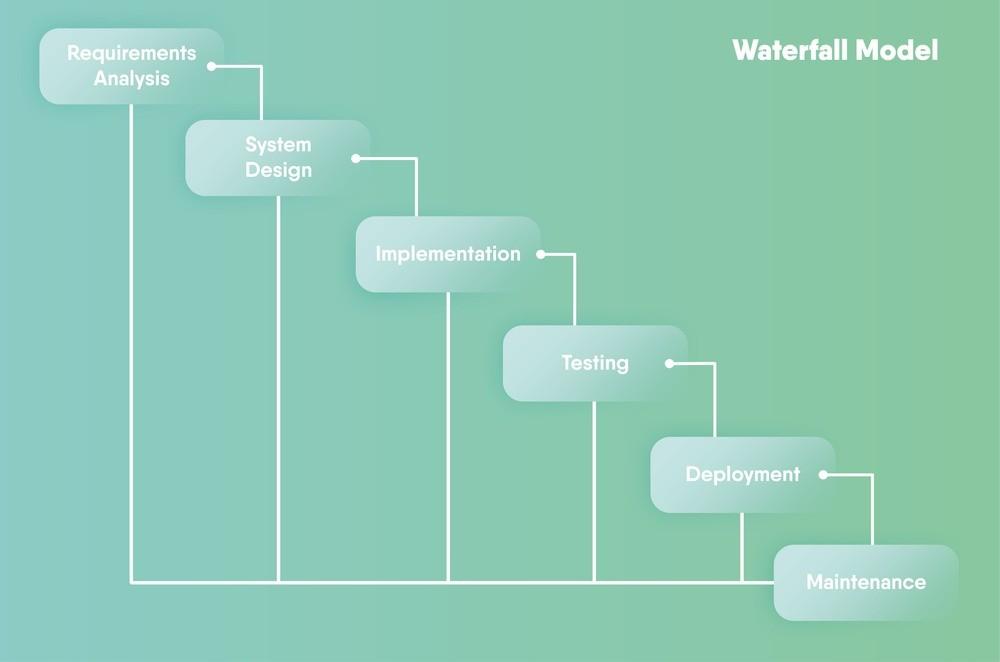
The sequence of stages in the Waterfall model
Pros:
Cons:
According to this model, the software is developed in a linear sequence of stages, but in several iterations. Thus, product improvements are planned and take place throughout the entire development life cycle.
The sequence of stages during development, in this case, will look like this:
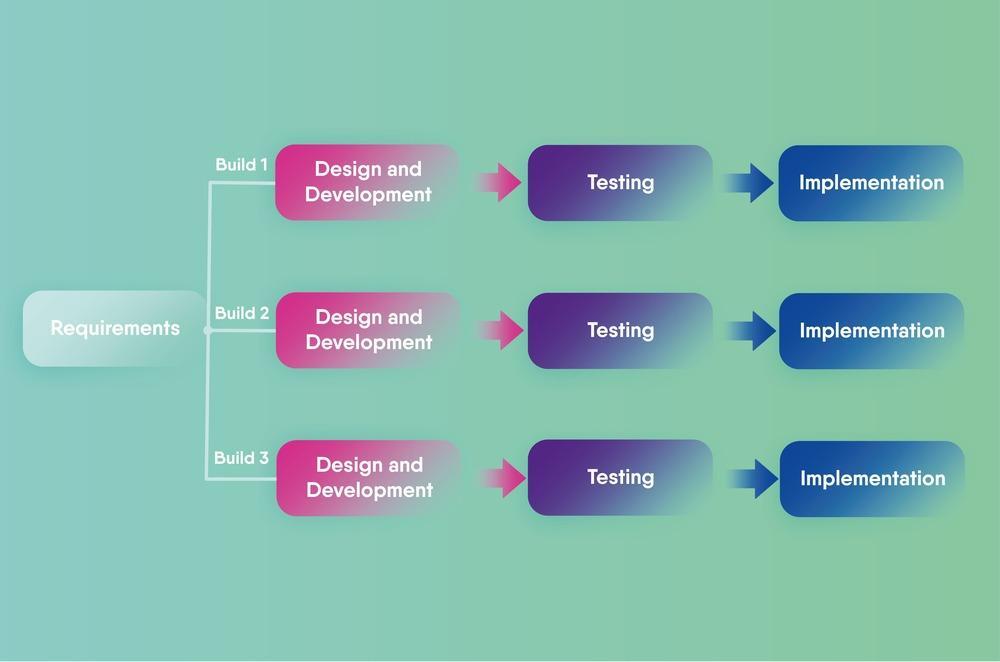
The sequence of stages in Iterative model
Pros:
Cons:
This model has become a follower of the Waterfall model, but with its help you can eliminate the defects that were missed earlier. In this model, processes are monitored at all stages to ensure the possibility of moving to the next level. The testing process begins at the stage of writing requirements.
Stages in the development of a V-shaped model:
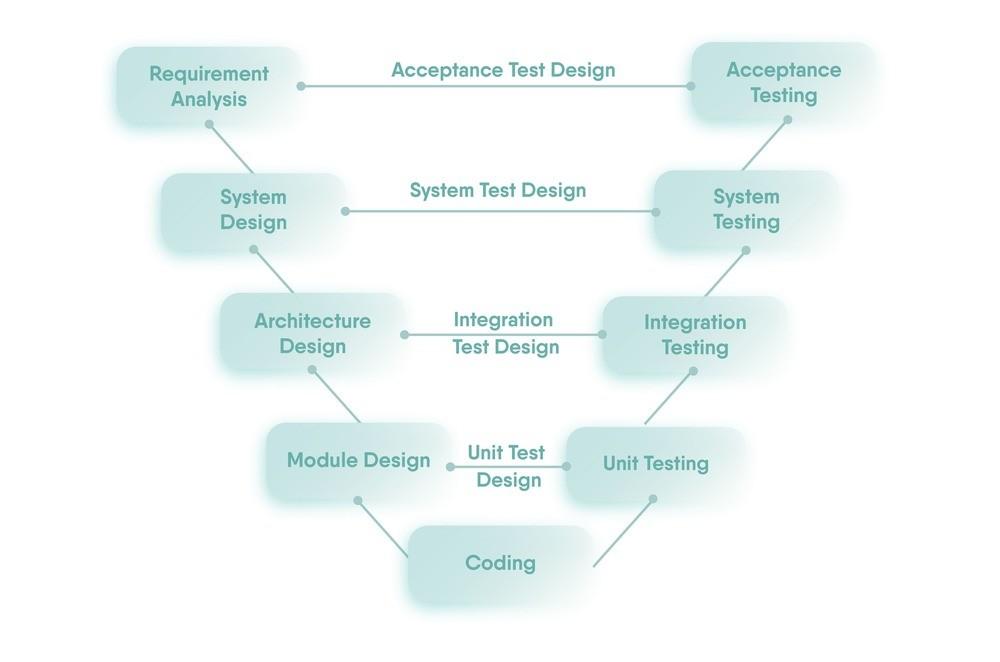
The sequence of stages in v-model
Pros:
Cons:
In this model, the product’s life path is like a spiral, which gets unwound from the planning stage, and with the passage of every further step. Thus, at the exit from another round, we get a ready-tested prototype that complements the existing assembly. If the prototype meets all the requirements, it can be released.
Illustration of the spiral model development process:
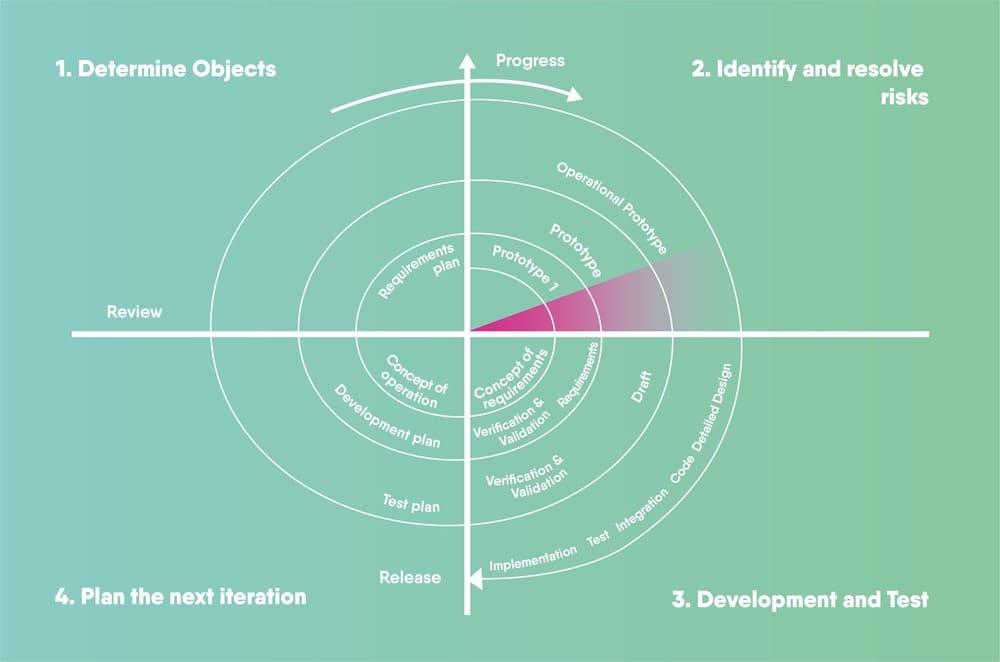
The sequence of stages in Spiral model
Pros:
Cons:
This is a set of different approaches to software development. These approaches are focused on the use of the iterative development (iterations are called sprints in Scrum), the dynamic formation of requirements and ensuring their implementation because of constant interaction within self-organizing working groups. Such groups mainly consist of specialists in various fields. Each individual iteration is a miniature software project. One of the main ideas of Agile is flexibility and interaction both within the team and personally with the customer.
The development process for the classic Agile methodology is as follows:
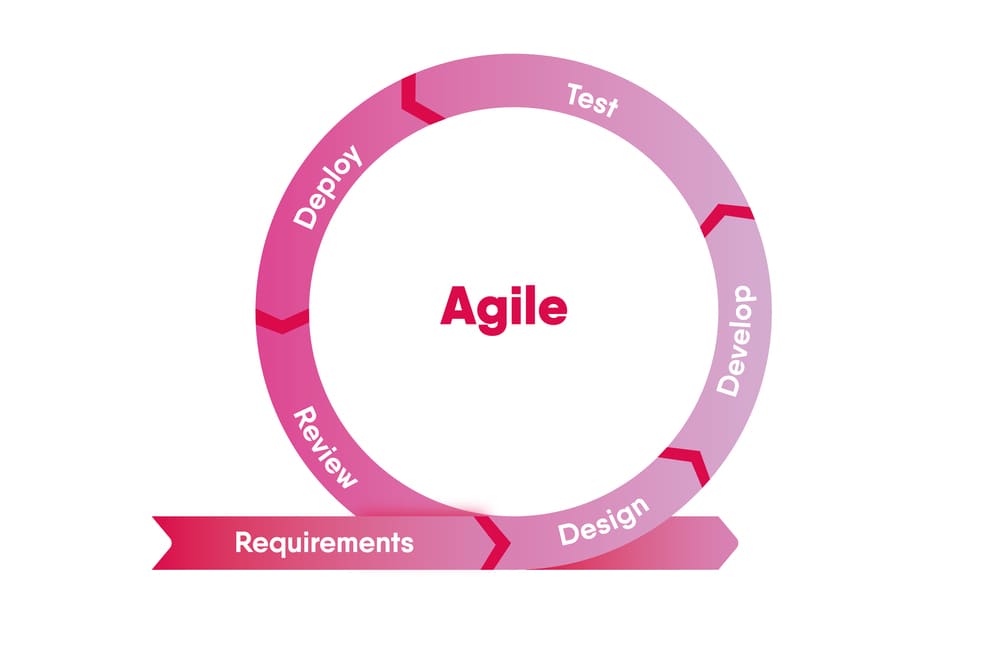 The workflow in Agile
The workflow in Agile
Pros:
Cons:
In modern practice, there is a bigger variety of software development models, which we will tell you about in our future articles. To sum everything up, we can say that there is no one and only model for all projects. Methodologies overlap in terms of resources and are partially similar to each other. In order to make the right choice, it is necessary to take into account the project requirements, funding opportunities, time frames, etc.